Hey Monkey! Almost a year and a quarter ago, I brought you and Mommy so we could all be together here in Costa Rica. In that time, we’ve had the opportunity to do some travelling, but until this past week, we hadn’t ever been to the Caribbean side of the country. It was kind of a major check mark we needed to cover.
We’ve been to the Pacific side a few times now, and we’ve done the “middle” parts in between, even just a little. (Sadly, we’ll probably not be able to do the more southern parts. Or see pretty much anything else, if my job ends up being the way it’s looking.) It would have been pretty silly not to see at least both coasts.
And with our impending departure in a couple of months, we were running out of time to do it.
Last week was a short work week, and I managed to steal four days away from work so we could hit the sand and jungle. Mommy and I went through dozens of different places to see and stay, and finally decided on a place called Playa Chiquita. (“Chiquita”, for the record, has nothing to do with the banana. It’s Spanish for “petite”. Which is pretty apt — Playa Chiquita ain’t that big.)
We packed enough things for four days: Tuesday through Friday, and hit the road. (We’d wanted to leave earlier, originally, but we had a Thanksgiving Day event with the Canadian Club on Sunday, and Mommy wasn’t feeling very well on Monday.) It turned out to be for the best, as I think if we’d tried to stay a sixth day, Mommy or I would have officially gone a little crazy. (You won’t remember this, but there are a lot of biting bugs on the Caribbean side.)
The drive from Santa Ana — where we live — to the Caribbean coast is an odd one. Although it is surprisingly easy, far easier than driving to the Pacific coast, it takes quite some time. Partly because once you leave San José, the Highway 36 travels to the north before bending east through Braulio Carrillo National Park — a windy road that must climb and descend a few hundred metres in its course. The road is, at least, two-laned for the uphill portions, unlike the Highway 1 through the mountains to Puntarenas.
But from the Park to the coast is still over 100 kilometres away. A short drive in Canada, maybe, but even on what I would consider to be the best long-distance road I’ve driven in this country, it still took two hours to reach the port city of Límon. The worst part about the drive was just all the produce trucks.
East of the Central Valley is prime agricultural land. While I doubt it’s what gave Costa Rica its name, it’s certainly a major part of Costa Rica’s economy. Out there are endless fields of pineapple and banana plantations.
As far as I know, most of them are owned by either the Chiquita Brands company (formerly known as United Fruit) or Dole Foods (a result of various mergers and renamings, but contains the former Standard Fruit Company). Neither have a particularly good humanitarian history, and are largely responsible for the term “banana republic”. These companies — or companies like them (I’m unclear as to which it is) — have a tendency to worry about their crops first, and anything else second. Including those people who work the fields. Spraying pesticides from planes while workers were in the fields, and children were in company-run schools was still common only a few years ago.
We drove south from Límon until we got to a small town called Beverly, at which point I accidentally zigged when I should have zagged. (I blame the long-knocked-over road signs.) Thankfully, Mommy got us back on the right south heading south.
The coastal road to Puerto Viejo wasn’t too bad. A little bumpier, but relatively easy. About five or six kilometres short of Puerto Viejo? Gravel. And it’s like that for most of the road south to the Panama border, although oddly broken up by paved sections that are often heavily pot-holed. All-in-all, it was just shy of five hours to get to Tierra del Sueños, our cabina for the first three nights.
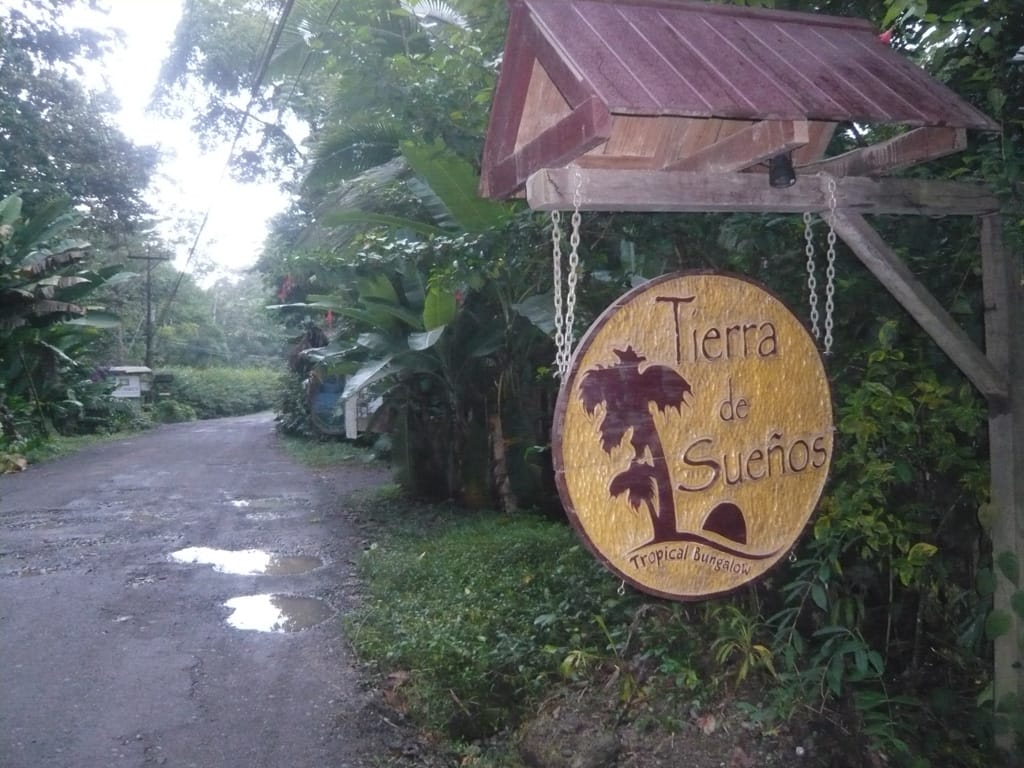
Tierra del Sueños is a little eight cabin hideaway carved out of the Playa Chiquita jungle, run by a pair of young Gringos, Angie and Brendan. They run a simple place about 200 metres from the beach (you have to walk down the road, and then along a narrow path through the jungle to get to it) that has little more than a bed, running water, and electric lights. Everything else is pretty basic. It was a really nice change from some of the places we’ve stayed before.
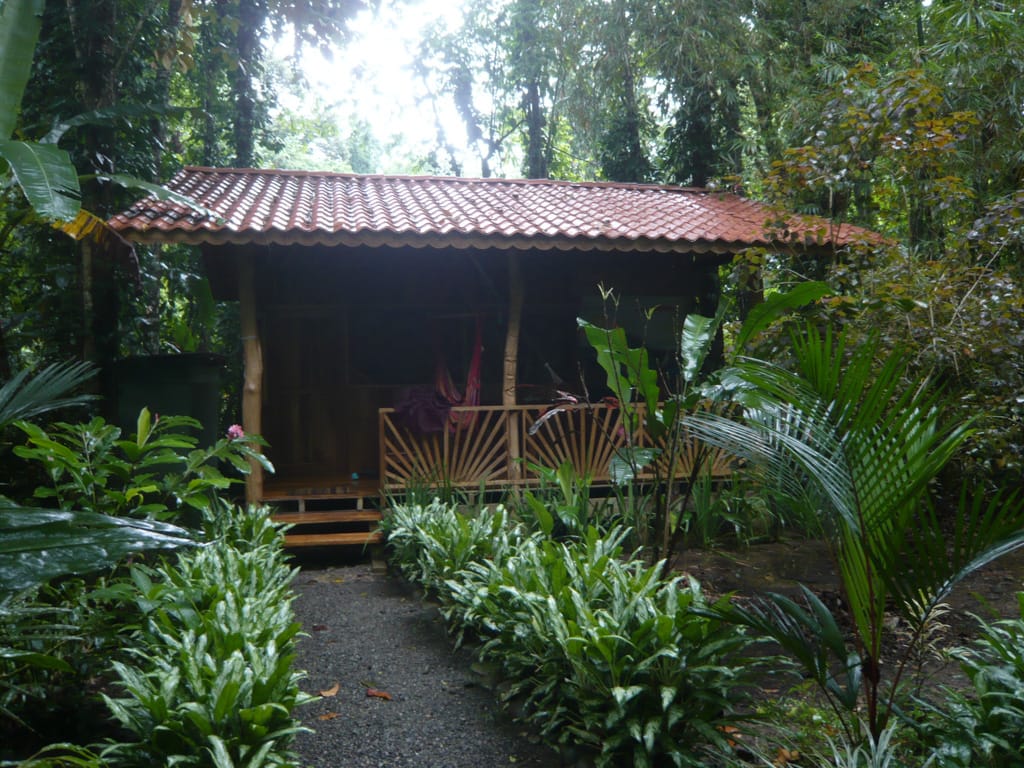
Dinner that night was at a place just down the road called Jungle Love, also owned and run by gringos (we would find out that most of Playa Chiquita seems to be inhabited by ex-pats from many countries). Although a bit pricey, the meal was fantastic, and because we were the only ones there for the first little while, we got quite a lot of attention.
It began to rain not long after we got back. And not a little rain — we’re talking Caribbean coast downpour. And as we found out, our aluminium roof not only shielded us from the rain, but also made an otherwise lovely sound of rain-on-roof turn into a tremendous racket. That night, you also slept on a big bed with Mommy — I slept on a mattress on the floor. I didn’t sleep, and neither did Mommy. You slept like a rock.
Howler monkeys woke us up the next morning before 5:00. We struggled to try sleep some more, but you would have none of it, of course. (Something about your tree-borne cousins, I can only presume.) With the rain having stopped, the only “reasonable” thing to do before breakfast (at 8:00) was to walk to the beach. We didn’t go to swim, just to look. The rain returned as we returned to the cabin.
At breakfast, we had a conversation with Angie and Brendan, while you got introduced to their two dogs, Cody and Ginger. (You LOVED being licked by Ginger, and I think as a result Ginger followed us a lot.) They suggested we go on a chocolate tour that afternoon, which sounded like a great idea, presuming the rain stopped by then.

With all the rain, there wasn’t a lot to do, so I took you into Puerto Viejo for a look-see. Despite being after 10:00 in the morning, very little was open. You were asleep even before we got into town, and remained asleep until we were back at the cabina parking. We had a snack at La Casa Del Pan’s Playa Chiquita location, where we would also have lunch with Mommy. (I ate far, far too much that day.)
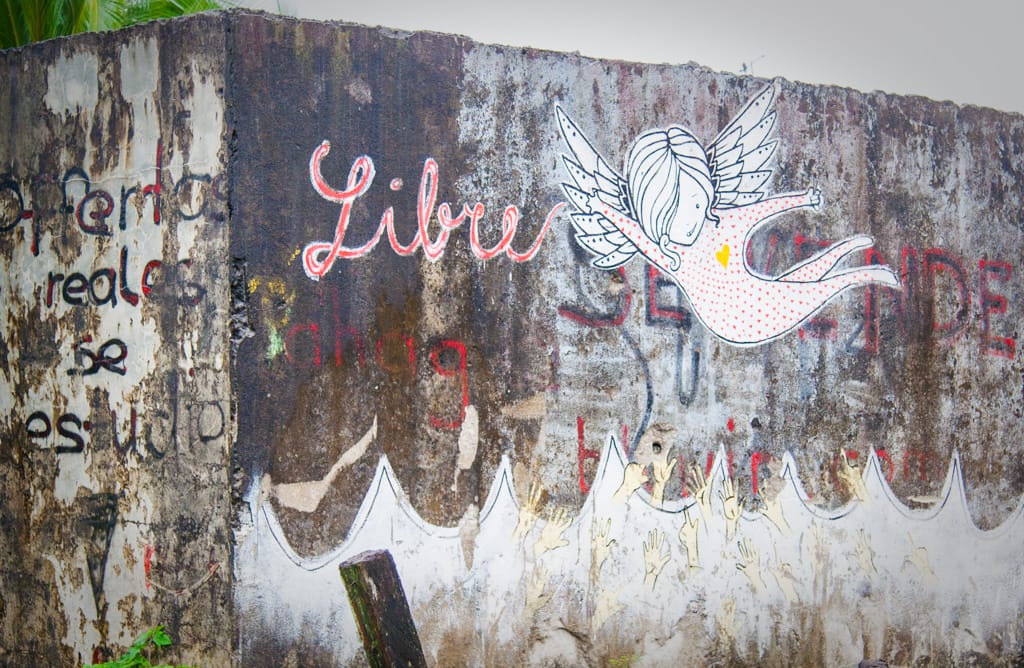
After lunch, we drove the short distance to ChocoRart, an organic craft cacao plantation that offers tours (on reservation only, which Angie was very kind to arrange for us). We were met at the parking lot, led up a hill and past a stand of bamboo to wait in a … well, it looked like less-dense jungle. There we waited until our guide, Marcus — also ChocoRart’s owner and operator — came to meet us. He came armed with a machete and a long staff with a hooked end that sort of looked like a flattened metal rubber duck.
He gave us a brief history of cacao farming, and told us how cacao had once been much larger in Costa Rica than it is now. But a fungus (I’m not sure which one it was) started spreading and largely wiped out the industry. (Depending on whom you ask, the fungus was either introduced accidentally, or the aforementioned ill-behaving fruit companies let it loose to lower the cost of cacao land so they could buy it for their own needs. Naturally, there is no proof either way.) The fungus still exists, and it’s a lot of work to keep it from healthy trees.
Marcus has about 300 producing trees, and probably hundreds more “wild” trees that he doesn’t maintain. Not that you can readily tell which is which — unlike every farm I’ve been to, there were no markers, no clear delineation, and only a worn path through the grasses showed you where to go.
The cacao pods are the size of a small football, and contain the cacao beans inside. The beans themselves are covered in a white fleshy covering that has a notably tangy citrus flavour (though you don’t actually bite into the bean at this point). The pods are harvested (we were there at roughly harvest time), and then allowed to ferment for a few days. The beans, separated from the pods, are then dried in the sun (whenever possible, given that it rains a lot on the coast), and eventually sent for roasting and processing.
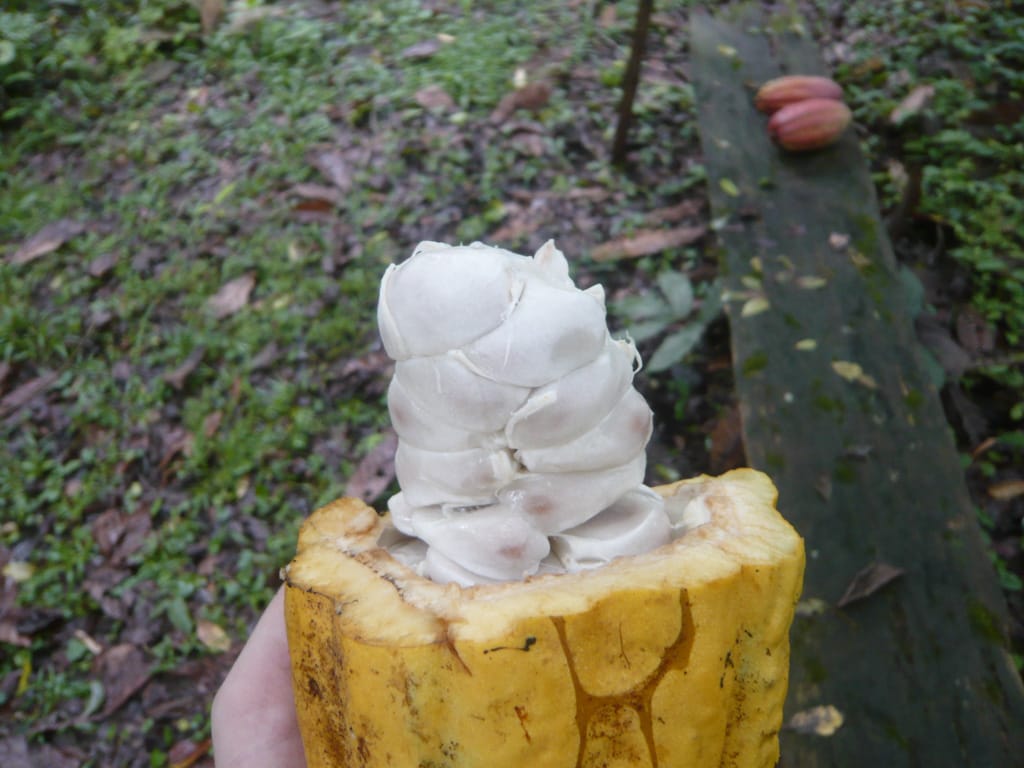
ChocoRart’s equipment seemed … well, not so much “quaint” as “antiquated”. But Marcus was adamant that nothing else was truly needed. The bulk of the work was tending the trees.
We finally reached the roasting hut, where we saw the small fire with the small (but heavy) cast-iron wok where a previous batch of beans were already roasting away. The smell was … well, if you’ve ever had pure cacao, you might have an idea of what it might have smelled like. After roasting, the beans were shelled with a large rock, and with a fan, the nibs (the cracked pit of the bean) were separated from the shell. It’s the same process every large company uses, too.
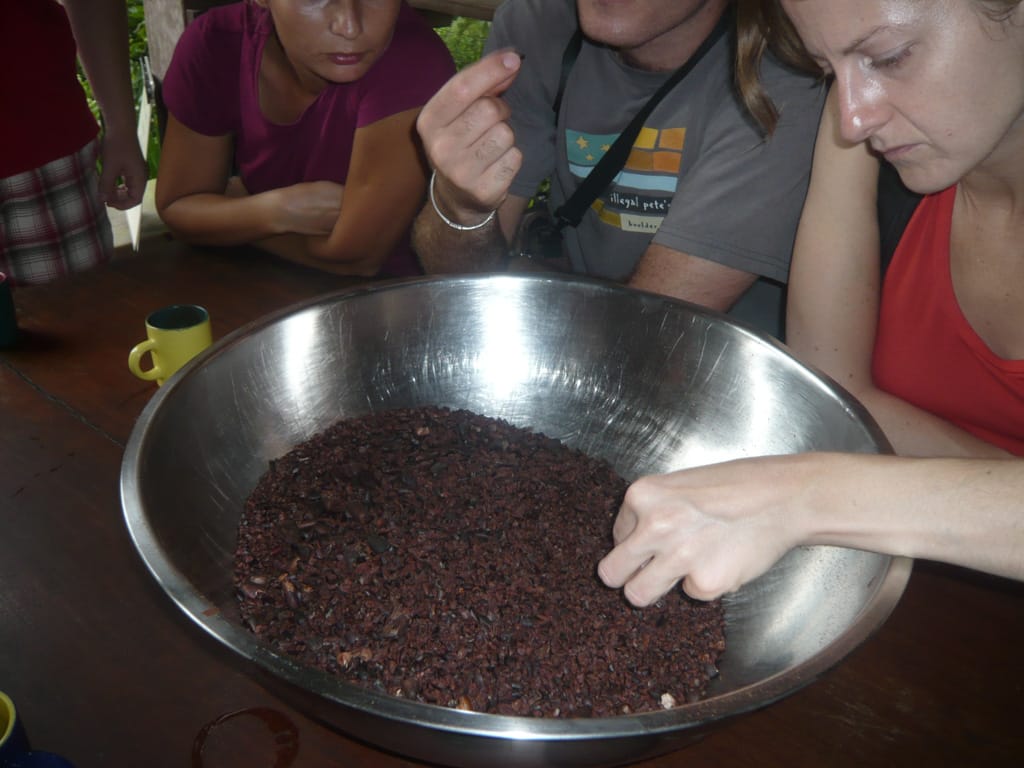
The nibs are then ground, which releases the oils, creating a thick brown paste of cacao. Mixed with a little water and a wee bit of spice, you get — duh — cacao. And it’s pretty darn tasty when it’s utterly fresh. (We all had small cups of it.) You loved it, Monkey. You just couldn’t stop licking your lips.
Cane juice is then carmelised and reduced, and mixed together with the cacao paste (the bigger companies do this, too — it’s called “conching”). We were served this while still hot, with a spoon, and a slices of banana. It was gritty — not the smooth chocolate common after many hours of mixing — but absolutely fabulous. It might forever change the way I love my chocolate.
We then had a chance to buy his products — short, round bars of flavoured “chocolate” that is hand-rolled. (We’ve already eaten all of it.) It wasn’t cheap, but it was utterly worth it. We had to be quick, though — you were hitting the ultimate chocolate high and were threatening to stair-dive down the very steep hill.
And that was just our first day!
You slept on the bed that night with Mommy, but fell off the side. Thanks to the mosquito netting, you didn’t “fall” so much as “slid”. You didn’t even wake up. I pulled you onto the mattress, got you sorted out, and then I slept on the bed with Mommy. (The last night there, you went right onto the mattress. We called it a “princess bed”.)
Next day? Beach day. You weren’t particularly thrilled with it at first (Mommy and I weren’t thrilled that Cody and Ginger followed, and then wouldn’t leave us alone), but you quickly changed your tune. You would love the beach, and hate to leave it.

The howler monkeys we’d kept hearing were in the trees above the pathway as we walked home, but weren’t in a howling mood at the time. You pointed and giggled happily, chanting “mono” and “monkey” (I think you’re finally understanding that the words mean the same thing). Thankfully, they’re not poo-flingers.
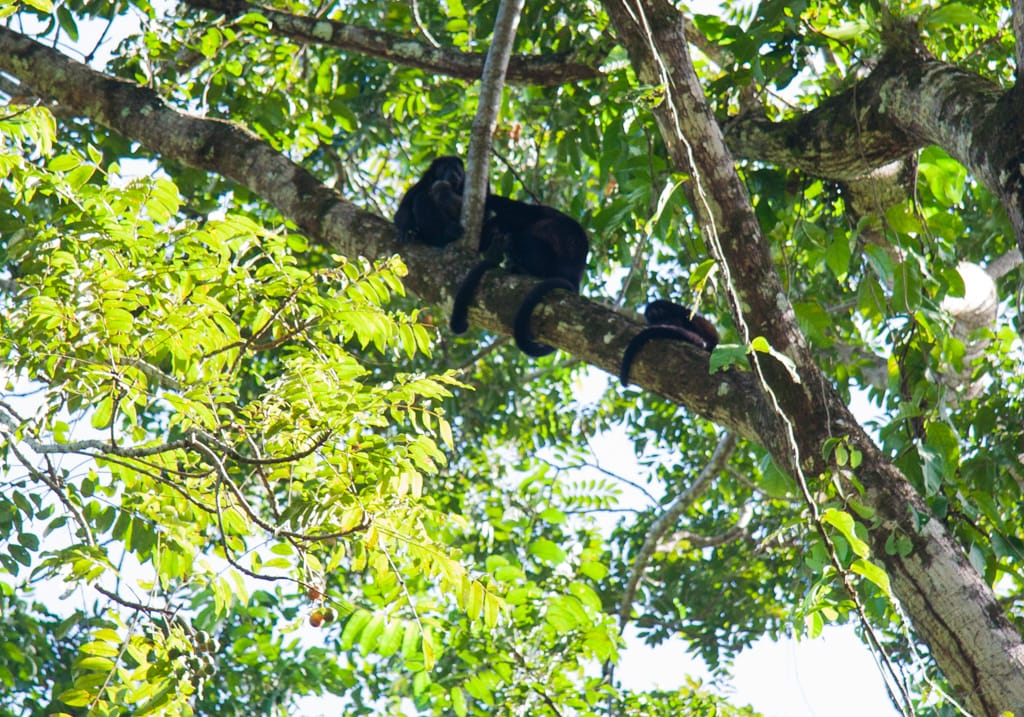
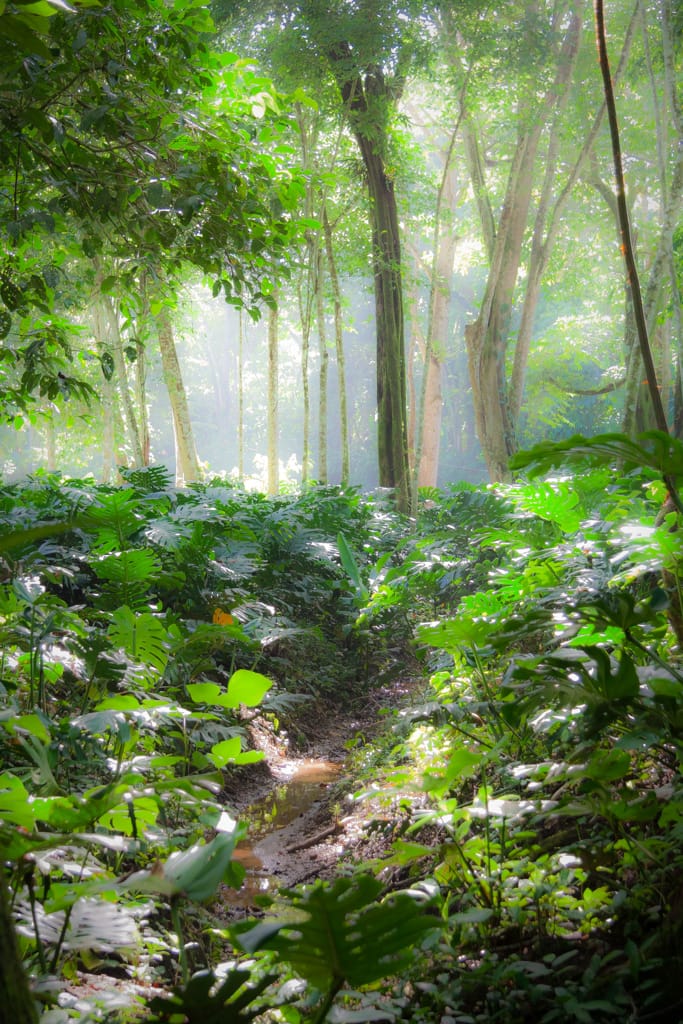
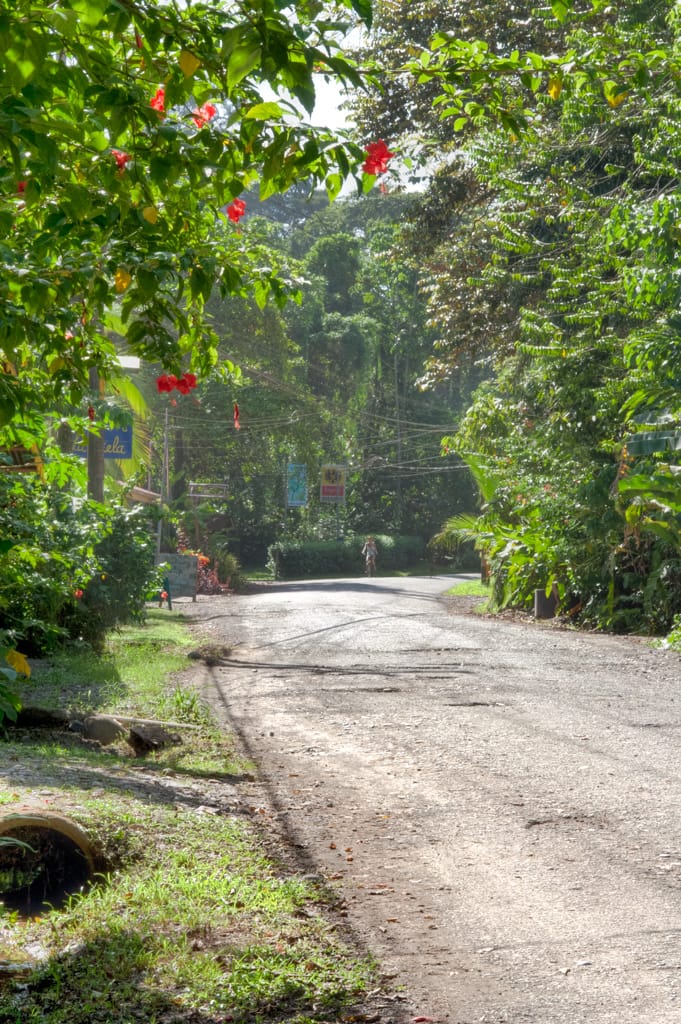
Lunch at La Casa Del Pan again, but dinner at Azaria (one of the other places we’d looked at), which was also very good. You enjoyed running around quite a lot.
Following breakfast on Friday morning, we moved up the road towards Puerto Viejo, and checked into Cariblue. A nice enough place, but I quickly remembered why I don’t like typical beach resorts — they all have the same campy look, over-priced food, and over-rated services. Bonus? You got to see “papa frogs” (what you call the green and black poison dart frog), Halloween crabs, and even a sloth!
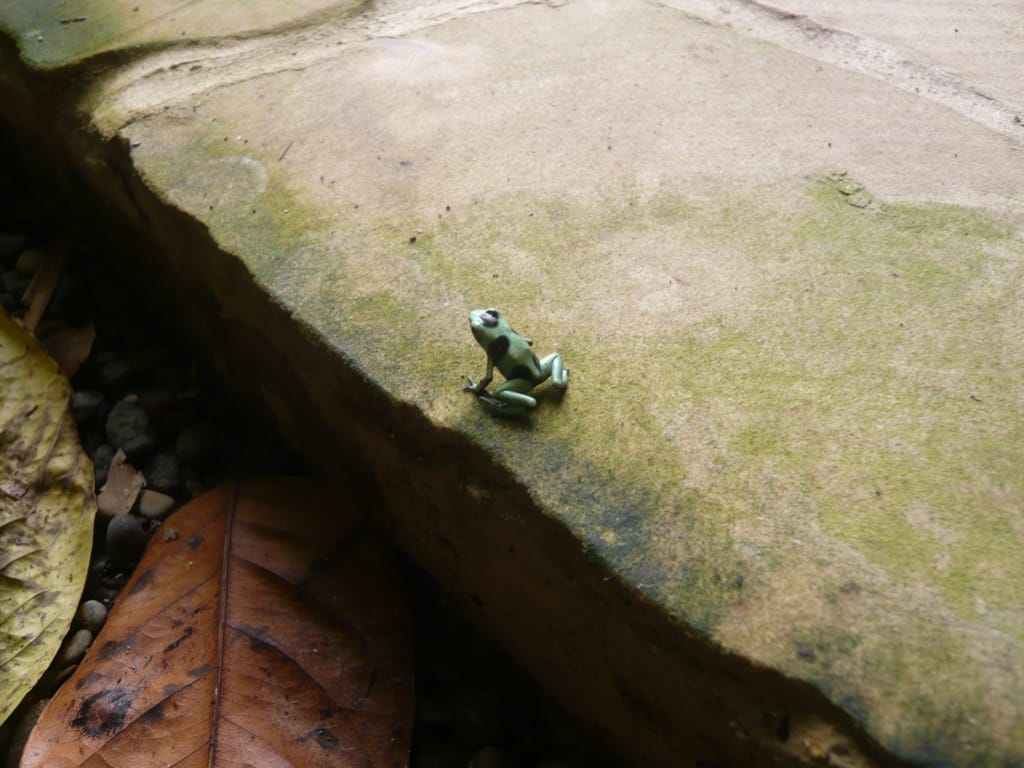
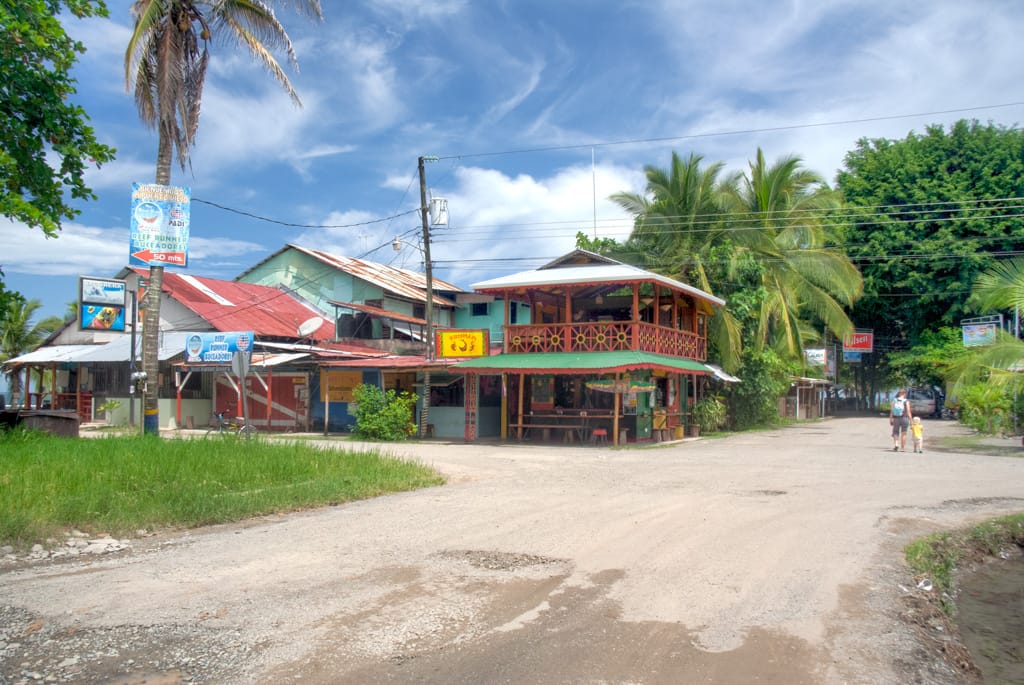

Well, that and a beach, too, of course.

You had your own bed that night. A real bed.
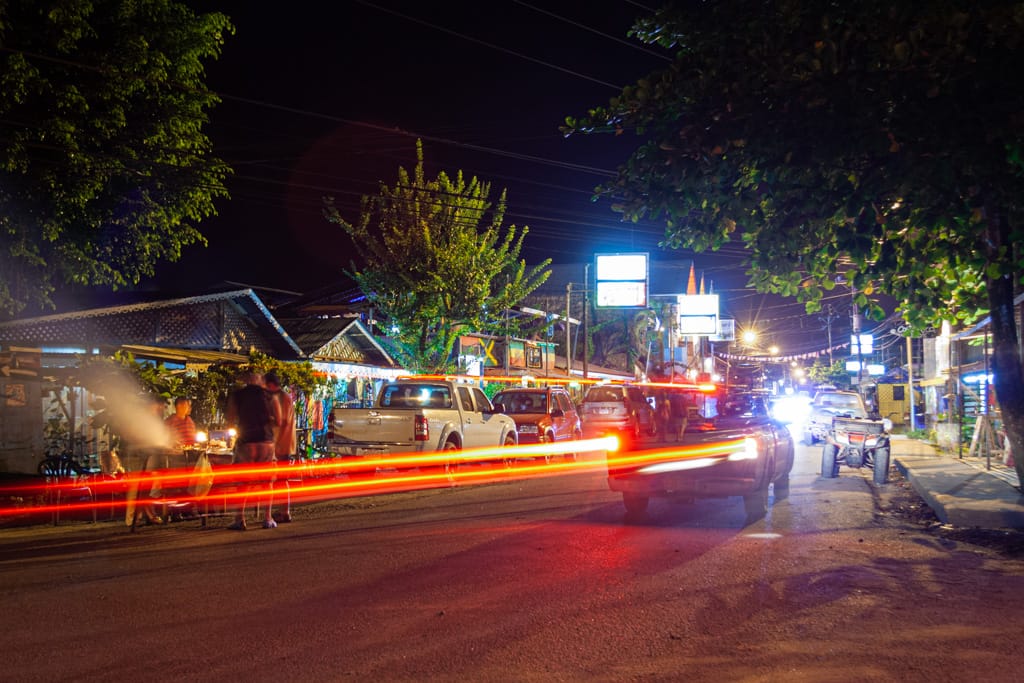
The next morning, we packed up to head home. But we didn’t go much further past Puerto Viejo, and turned southwest towards the town of Bribri, and the Bribri indigenous reserve. Mommy’s friend Rebecca lives there now, and we wanted to see where she lived, and the things she had been doing for the last few months.
Once we passed through the town of Bribri, we turned onto a stone-laden road (it wasn’t even gravel) and drove for what seemed like a mistaken set of directions-length of time. After over 30 minutes, we arrived near the town of Suretka, and the house of Louisa and Solomon. There we found how their family, who live on the reserve, work to live off the land and hope that their efforts to drive tourism one day work in their favour.
You played for a while with their children, Allison and David, and with their toys (you particularly liked David’s fire engine). We drank some limonade, and toured the buildings. Then Rebecca took us on a long drive down a road that ran through rivers before we got to Bambú, and the Bambú Indigenous Cultural Centre.
The Cultural Centre is a place where visitors (usually university students) come to see what eco-tourism and indigenous tourism looks like. The Cultural Centre itself is set up like the traditional housing (even though almost everyone these days is in much more familiar walls-and-ceiling western-style buildings). Then Rebecca directed us back to Bribri where we dropped her off.
The drive back home was actually easier than the drive out, though it took probably about as long. It was good to be home, to see Asia again (she ran from your squealing), and sleep in our own beds. If nothing else, a sign of a good vacation.
Sadly, Monkey, my vacation is now over and I have to go back to work tomorrow. I hope that you have some memory of this trip that you can remember years from now. If not, though, we certainly have more than enough pictures of it all.
